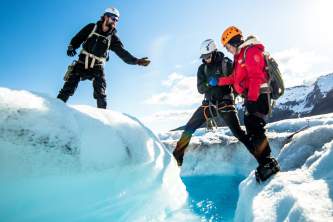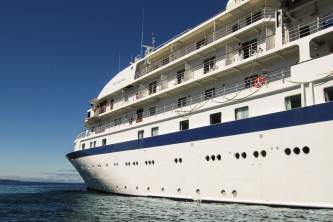Avoiding Motion Sickness In Alaska
One trip to Alaska can include several forms of transportation: big ships, small ships, trains, buses and all manner of planes and helicopters. While many visitors find the process of getting around Alaska just as fun as the destinations themselves, the transit parts of the trip can spell anxiety for anyone who gets motion sickness. After all, no one wants to spend all the time, money and effort on an Alaska vacation only to be the guy who spends the whole trip green in the gills or, worse yet, leaning over a railing.
If you get “seasick,” take some comfort. We’ve collected a variety of good tips, some depending on how you travel, and others specific to Alaska travel itself.
Cruise Ships
Don’t assume that smaller ships are worse for seasickness than mega-ships. All ships move in waves, and the size of the ship does nothing to eliminate motion—it only changes its characteristics. Choosing an itinerary in protected water is your best bet against motion sickness. For instance, a roundtrip Vancouver Inside Passage itineraries stay behind Vancouver Island in more protected (and scenic) waters. The itineraries that sail the Inside Passage from Seattle, on the other hand, travel two full days on the open Pacific Ocean, which can be rough.
Choosing the right cabin can make a difference too. Midship moves less than forward or aft cabins. Some people find that having a verandah is helpful, too, for getting quick access to some nausea-stifling fresh air.
If you know you struggle with motion sickness, ask the cruise line before you book what kind of help they can provide: Most ships are well supplied with at least some prevention measures, ranging from merely good advice, pills, or even shots administered in the onboard clinic.
Trains
Alaska Railroad is proud of its domed cars, great for 360-degree viewing, but they might be a problem for people who get “seasick"—just getting up the stairs to reach those cars can bring on queasiness. Your best bet is to stick with the Adventure or GoldStar class cars, in which you stay on the lower level. The GoldStar even has an open-air platform, which may help smooth out queasy moments.
Otherwise, always ride facing forward, and keep your eyes focused outside as much as you can; if you can smell diesel fumes, move away from it—just the smell can trigger a bout of nausea. Sometimes, just reclining your seat and taking a short nap can settle your stomach.
Helicopters and Small Planes
These are less likely to cause problems: Getting sick on a small plane has more to do with flying in less-than-ideal weather conditions, while the smooth rides of helicopters tend not to bother people—even those who get sick in other circumstances. If you find you’re feeling ill, though, keep those eyes focused on a point outside.
Some tips, meanwhile work for any kind of transportation:
Don’t ride on an empty stomach. Before your ride, eat a moderate-sized meal of light carbs with a bit of protein (avoid dairy or heavy fats). During the ride, keep snacking so that your stomach never empties completely (trail mix is a good choice, or even a turkey or beef jerky). Also, chewing minty gum or sucking on mild flavored hard candies can help.
If you need medication, take it at least a half hour before you think you’ll need it. Our railroad friend says she likes children's Bonine (the generic form is called meclizine). “I can take a single dose and feel no motion sickness at all for up to four hours,” she says. “After about fours hours, if I am still traveling, I follow up with 1/2 dose and that has prevented motion sickness for the duration of the trip up to 12 hours.” Being a kid’s dose, it didn’t make her so groggy that she couldn’t enjoy the ride (a lot these medications will make you sleepy).
Don’t get too hot. Drink plenty of chilled water and run cool water over your wrists. Or, wet a napkin with cool water and hold it on your neck or wrists.
If you’re having some queasiness, don’t read. Instead, keep your eyes focused on a stationary object in the scenery as you are riding. If you start feeling weird after looking at something or something inside, reorient yourself by training your eye on a point outside—or even just by closing your eyes and rocking with the motion for a few minutes to settle your stomach.




